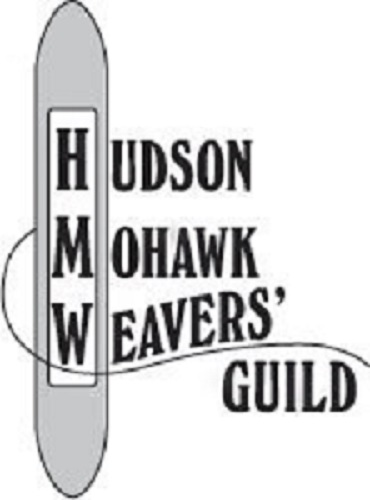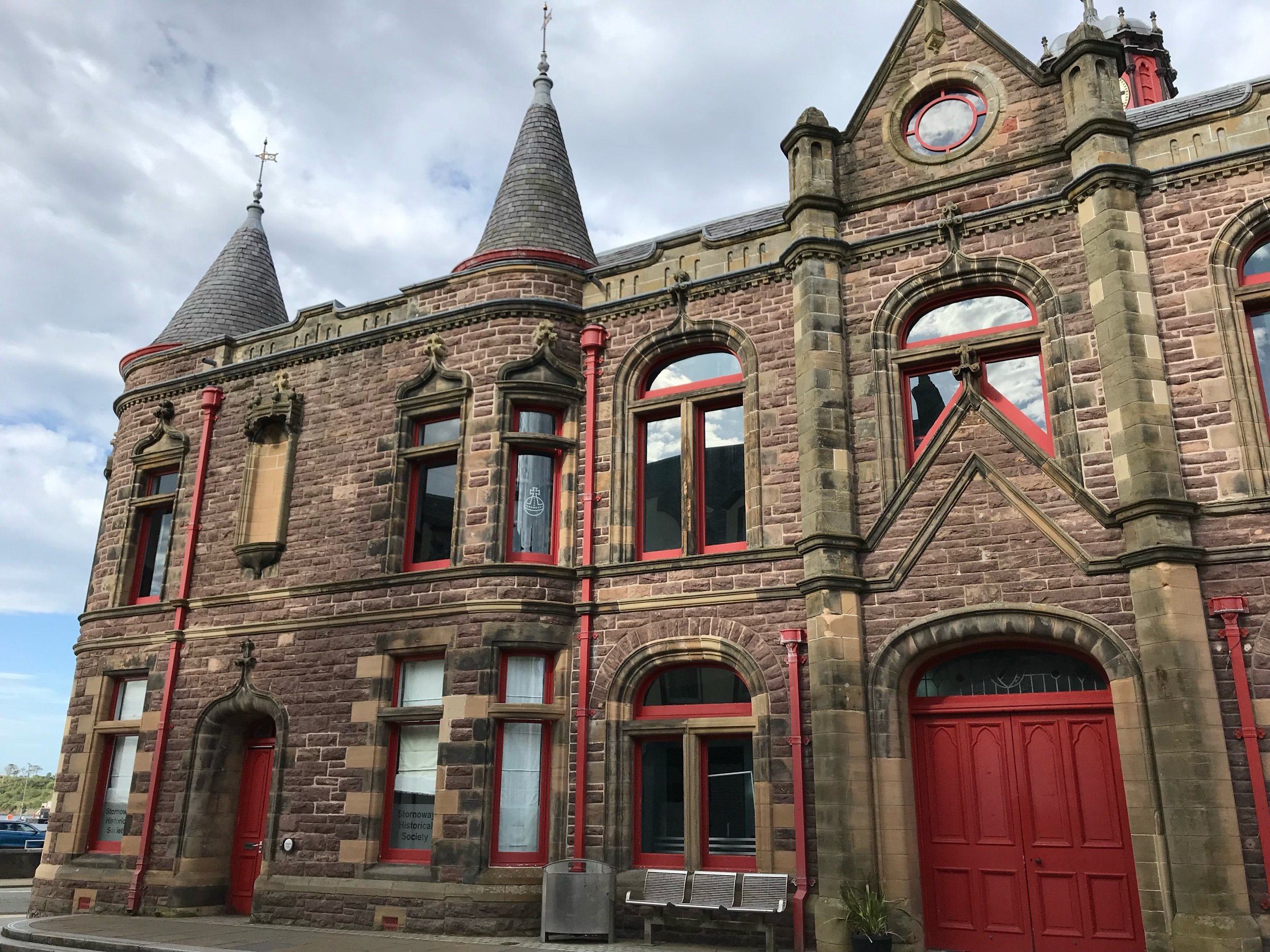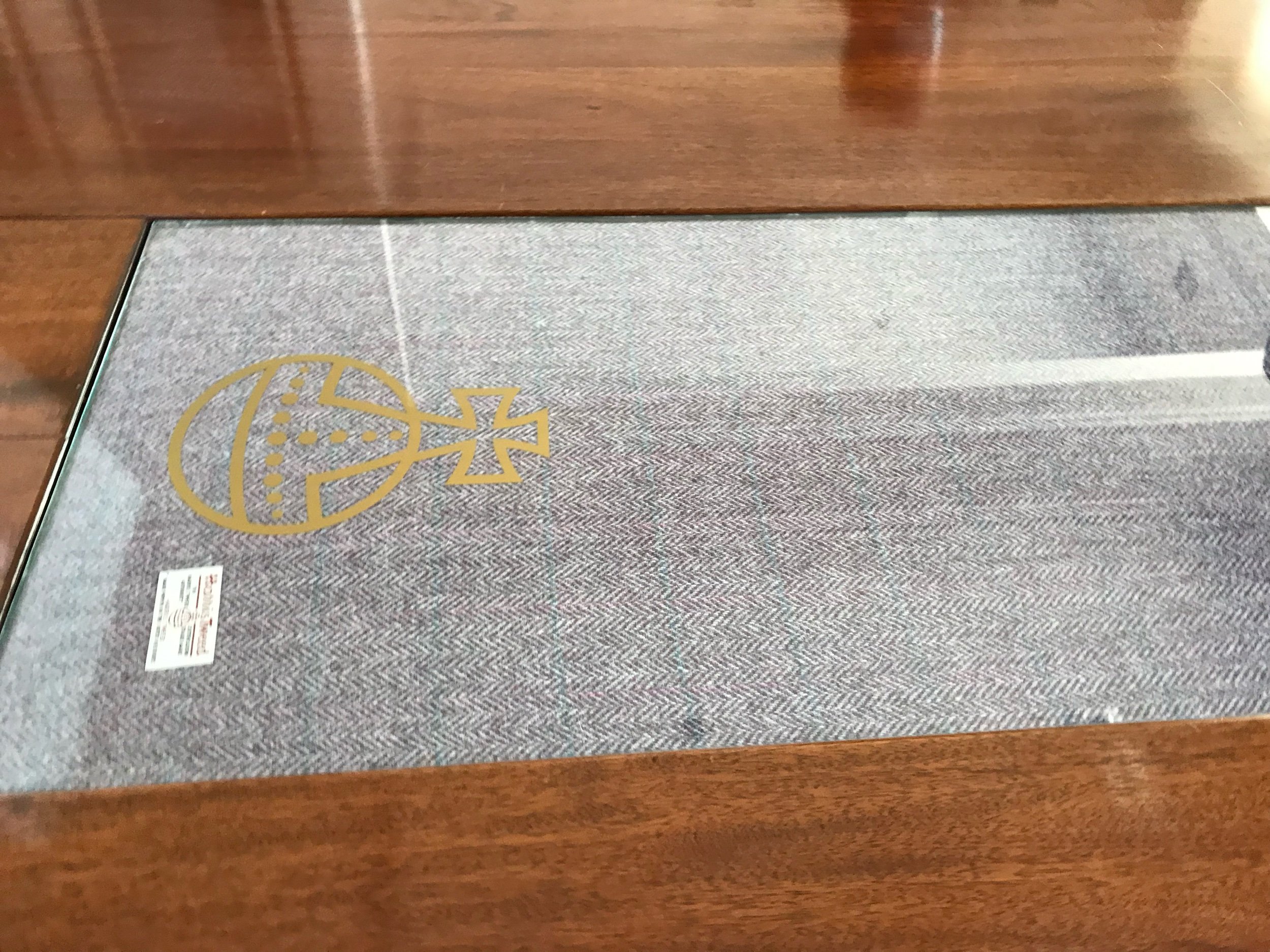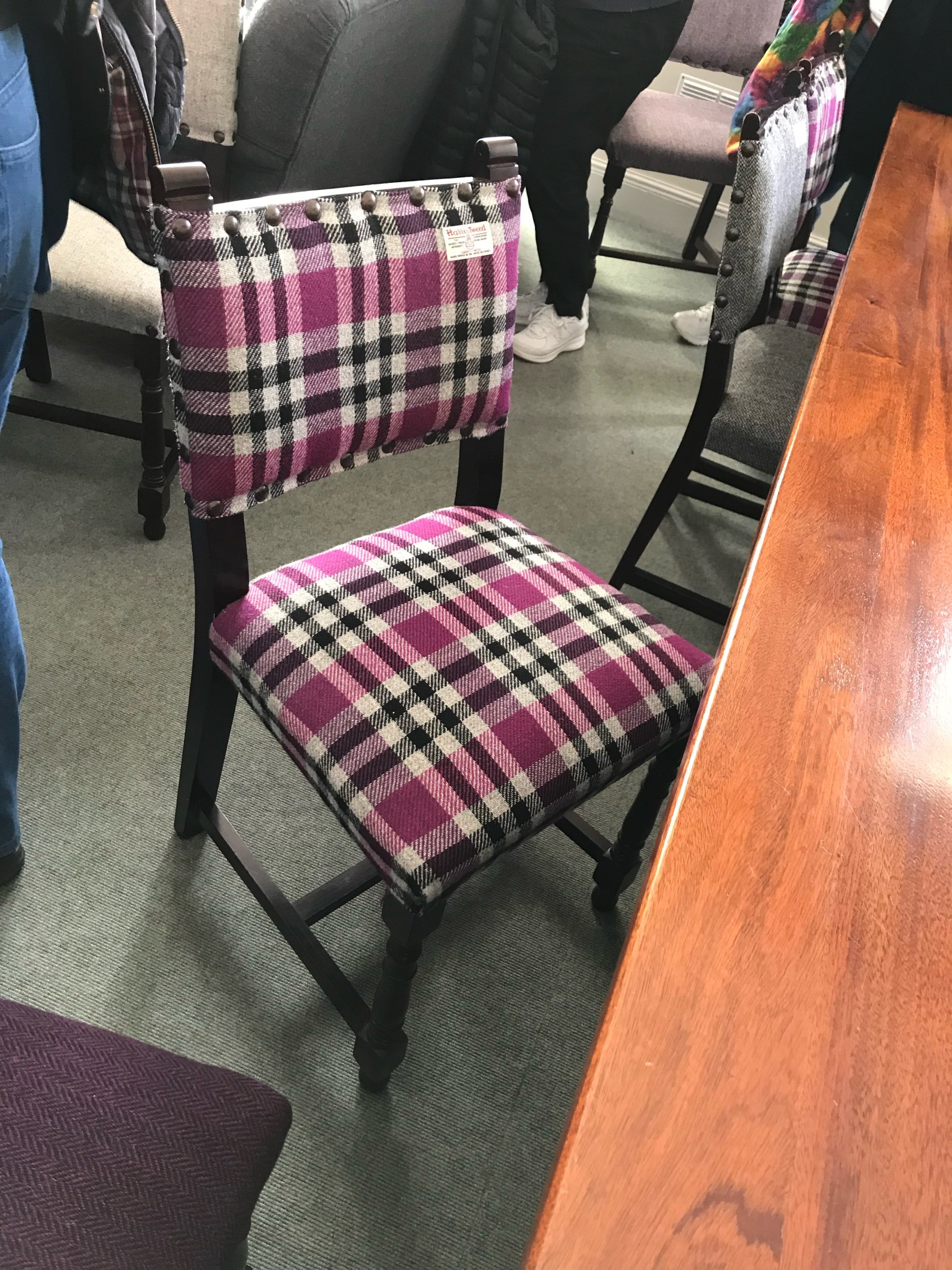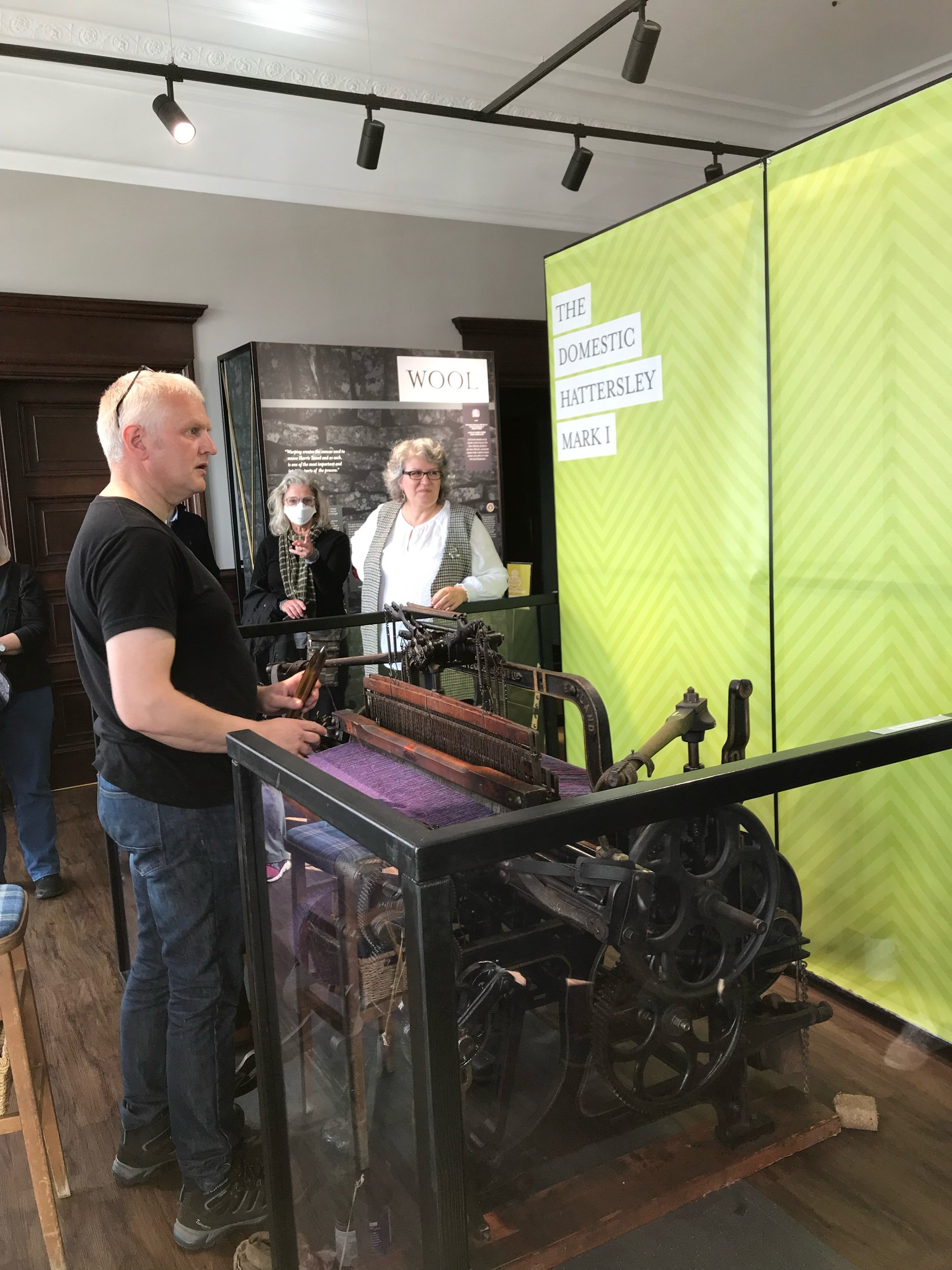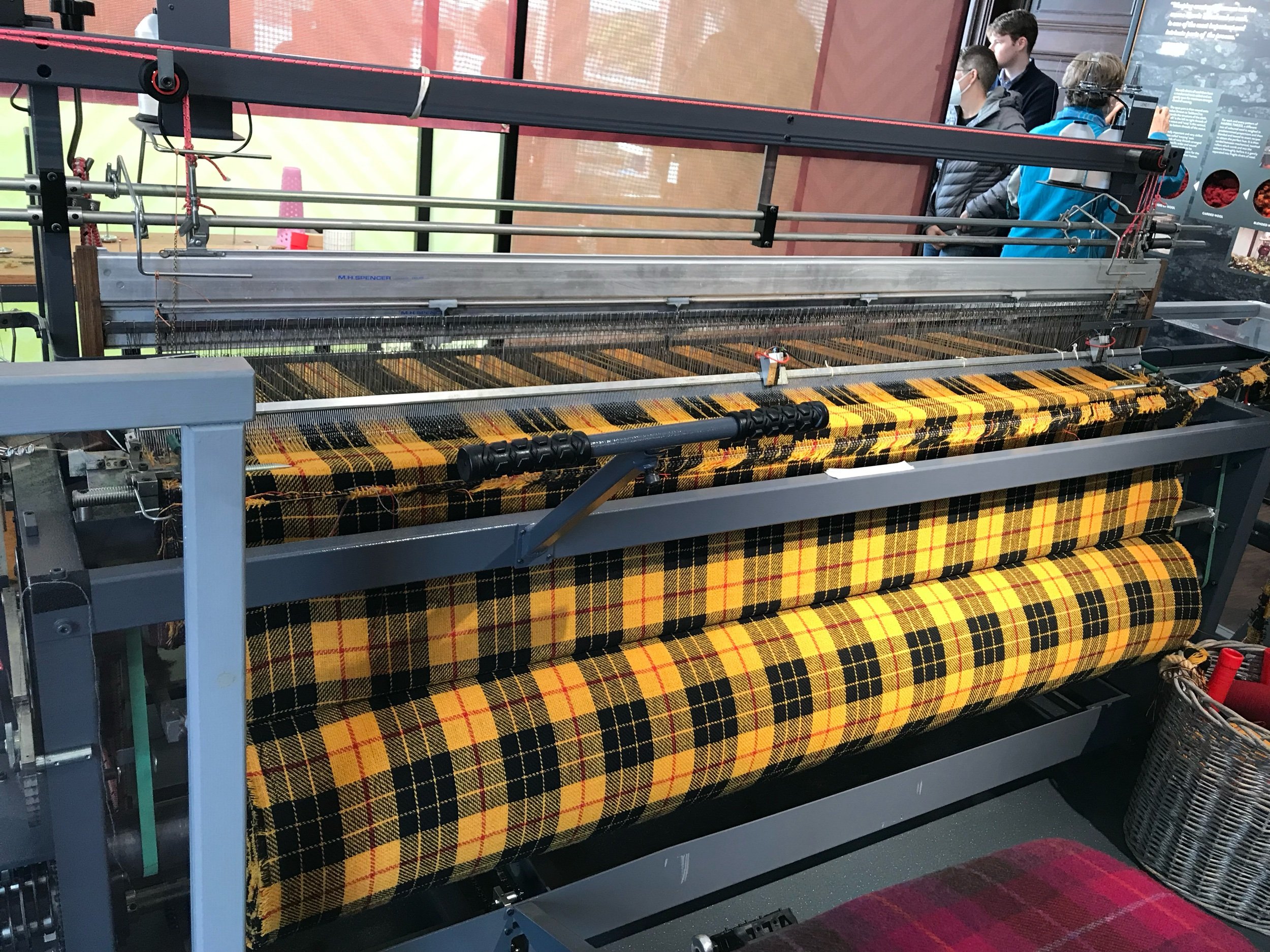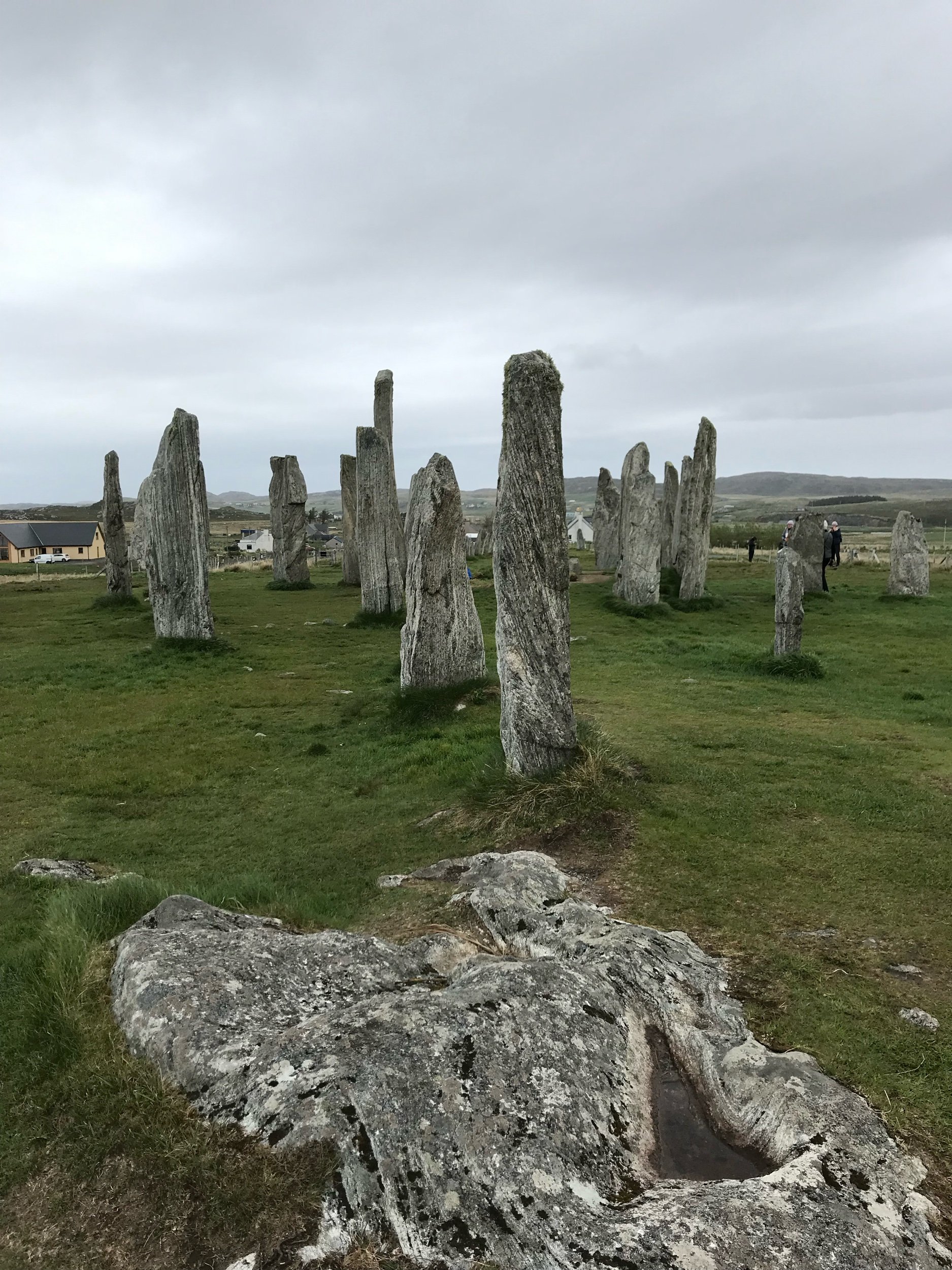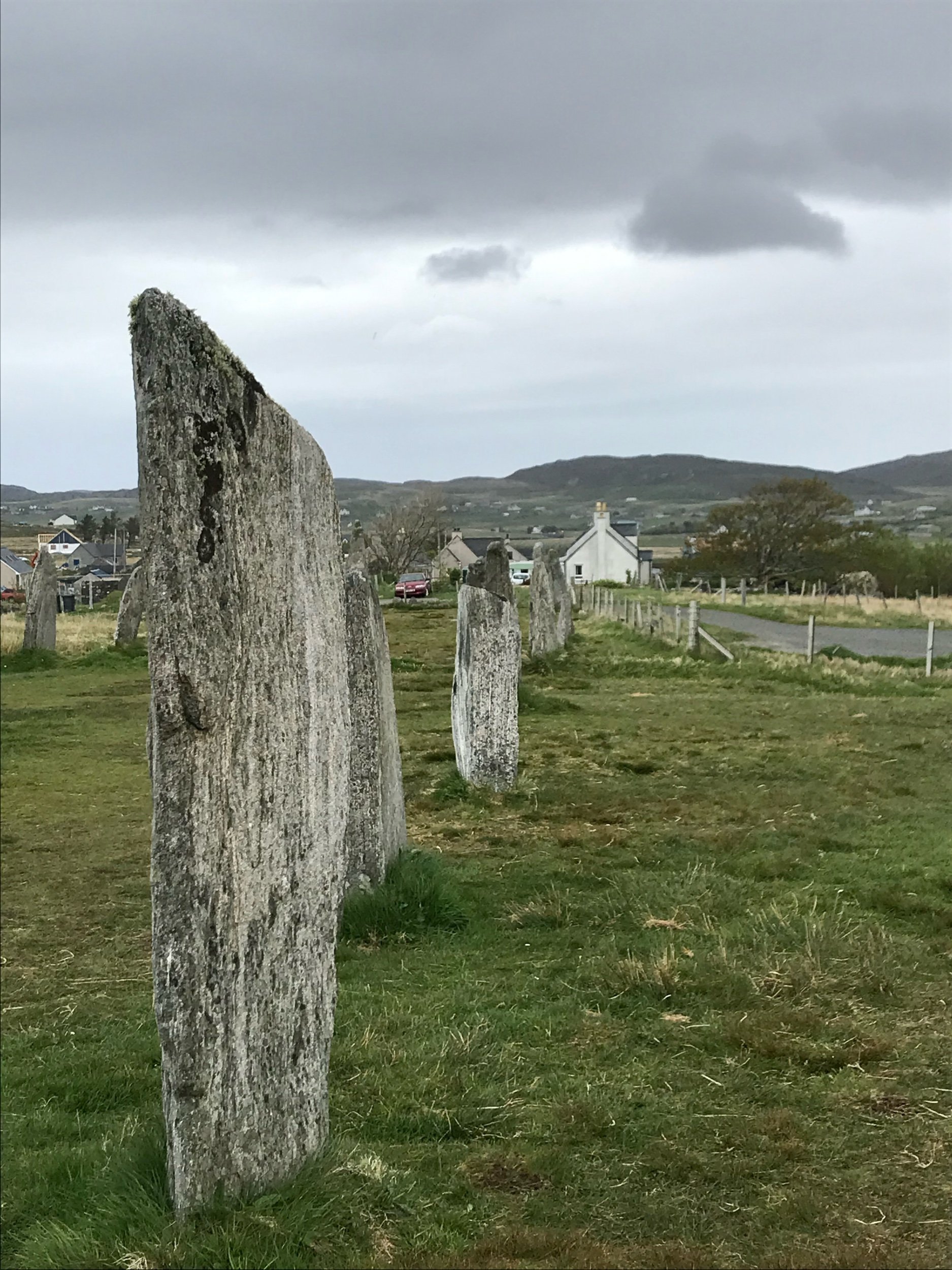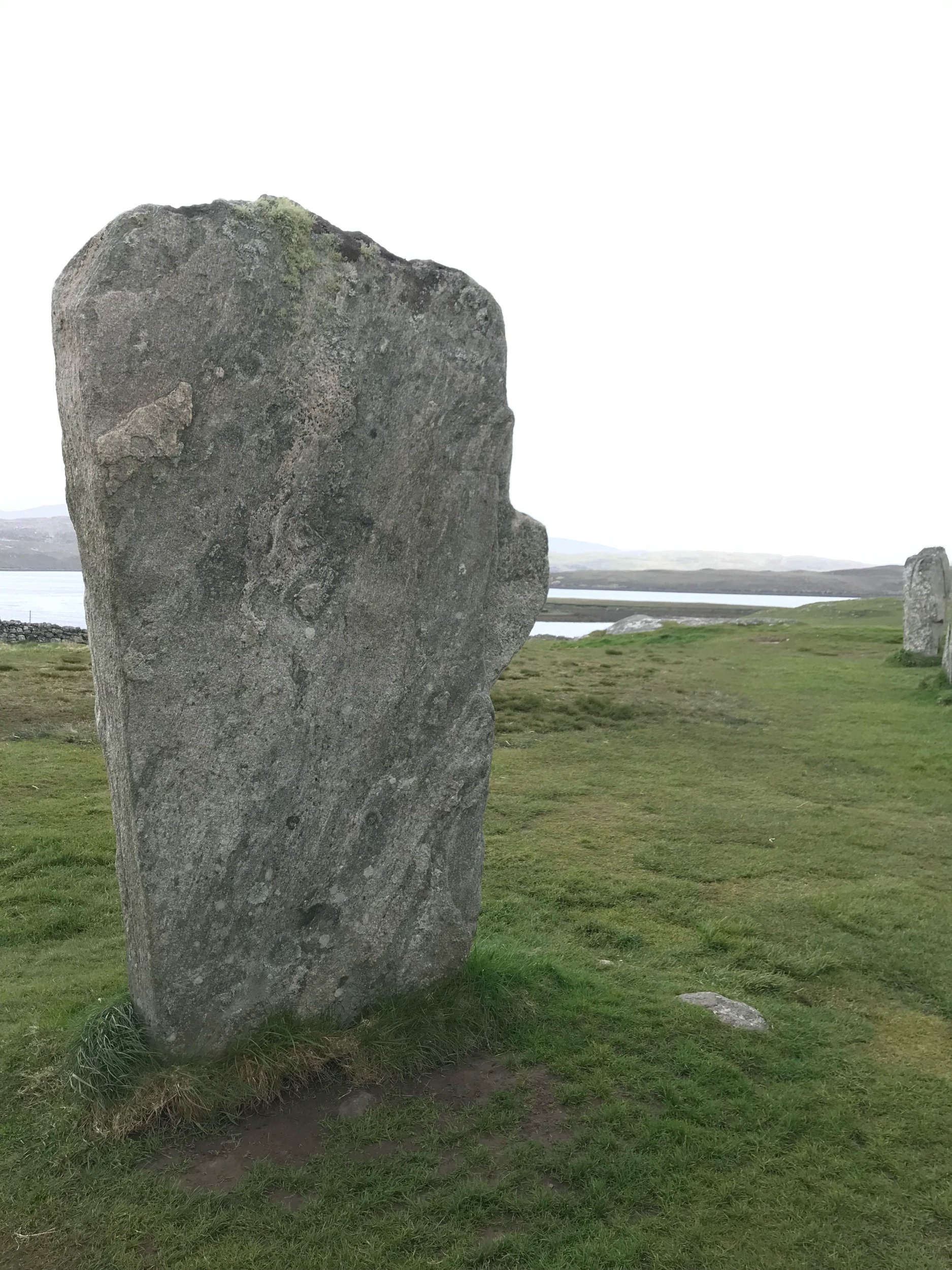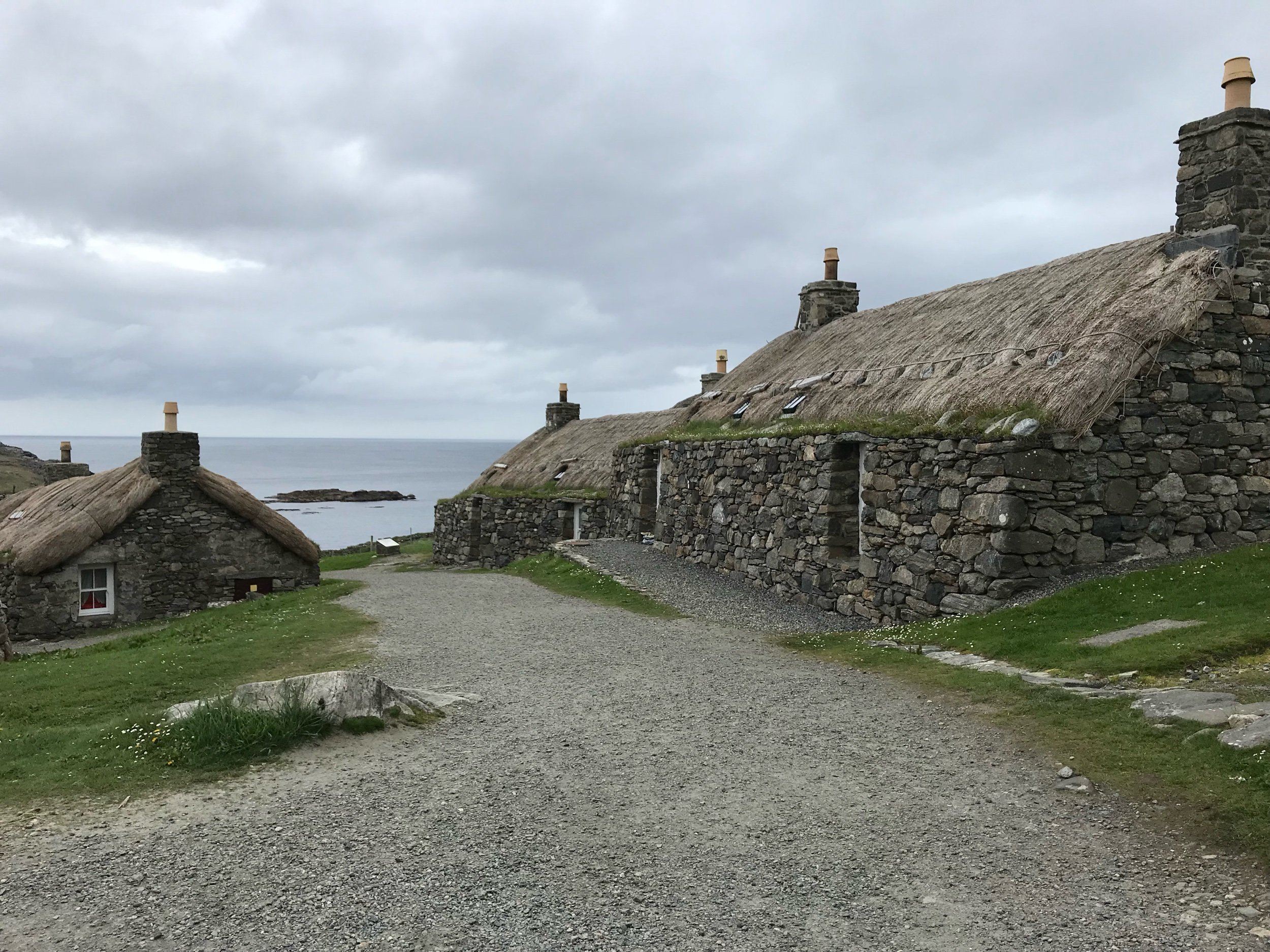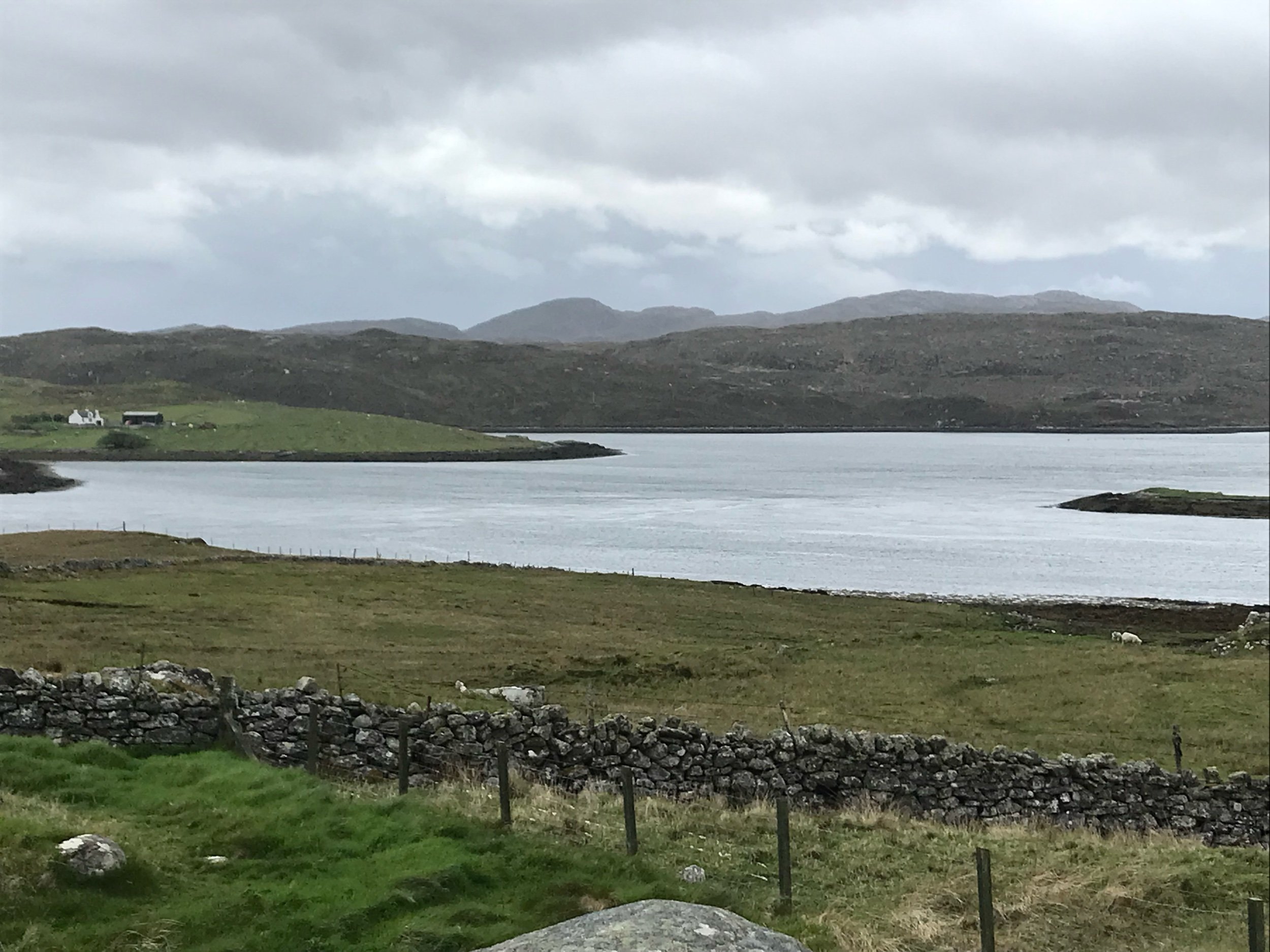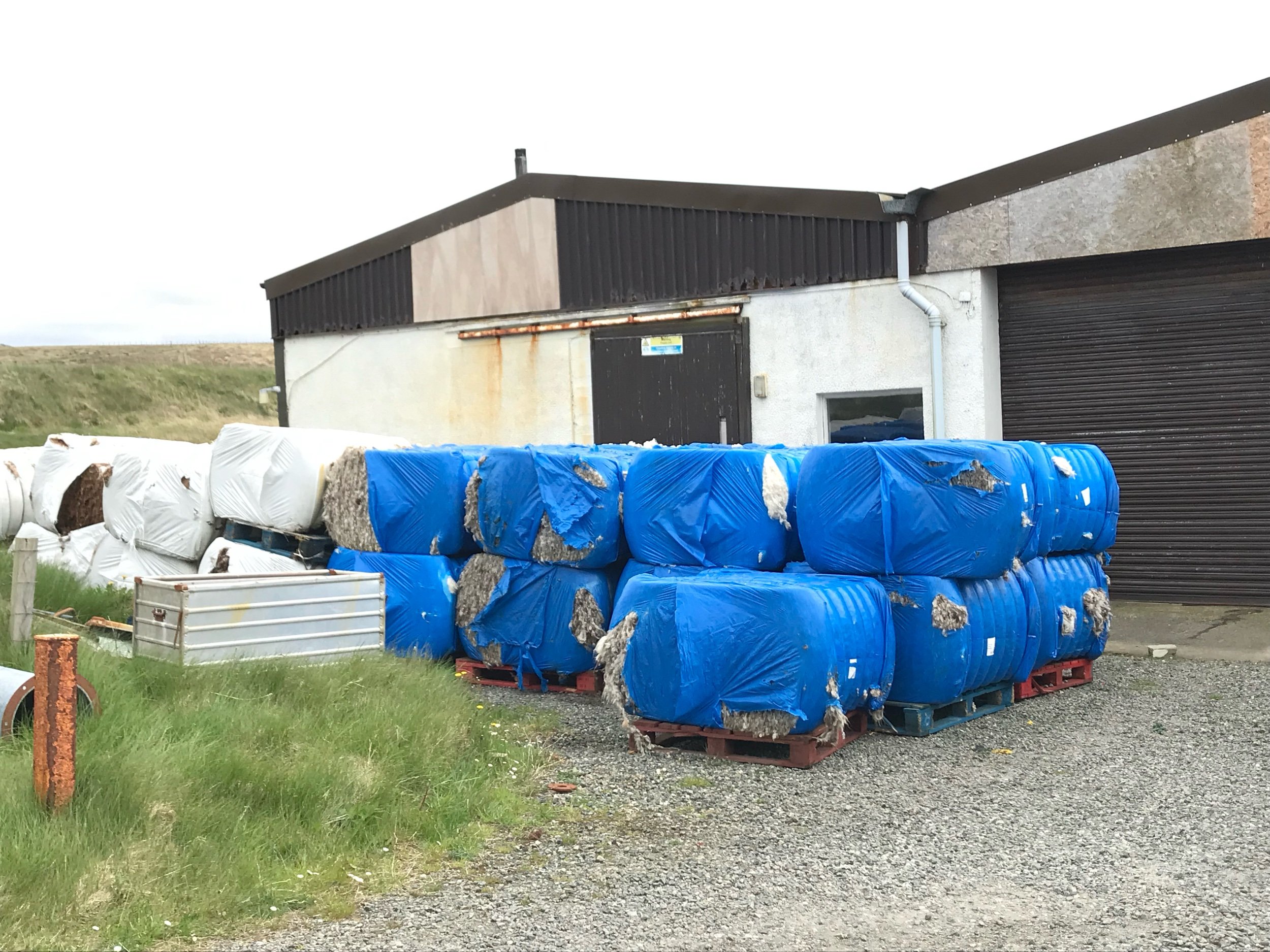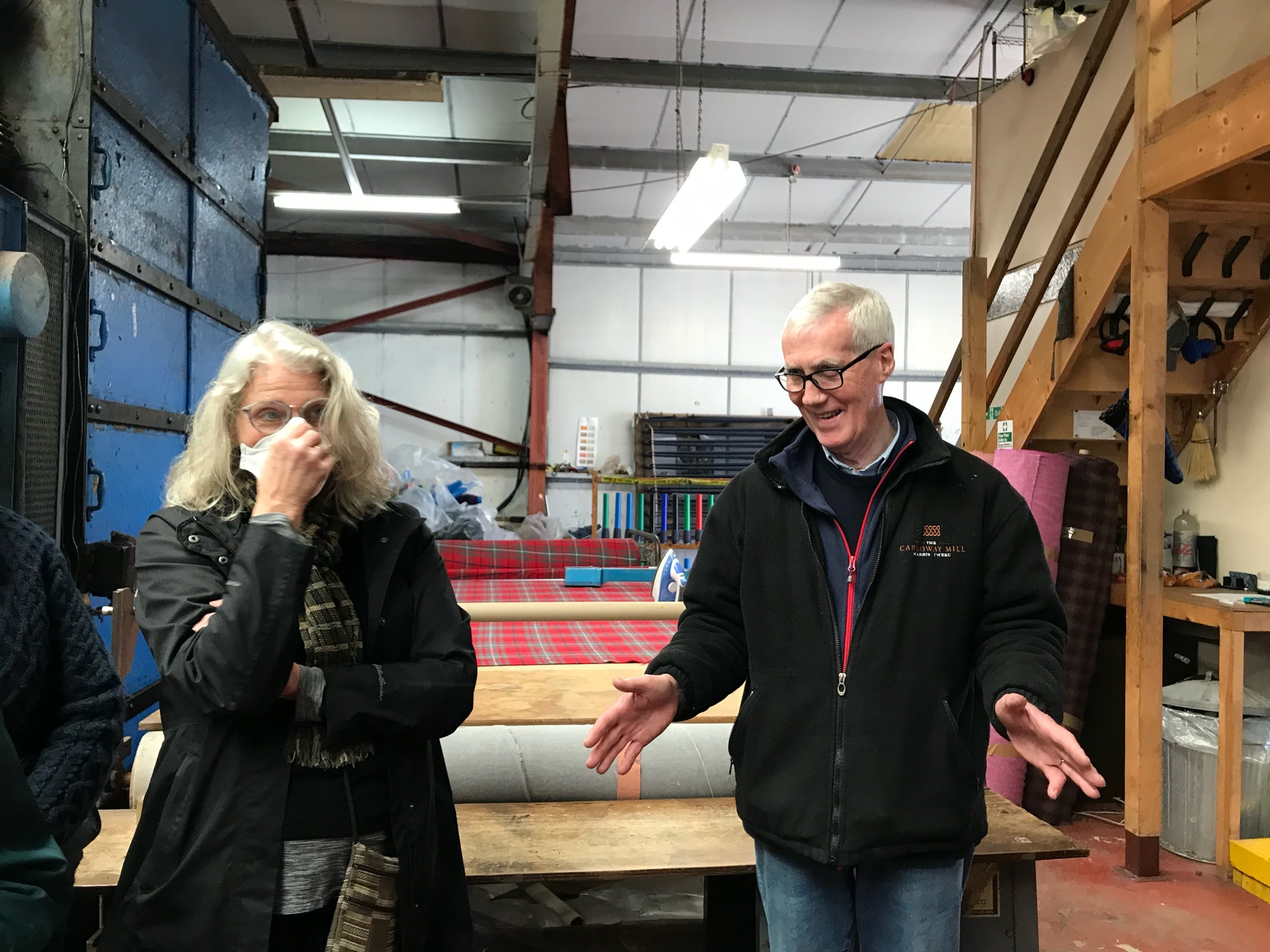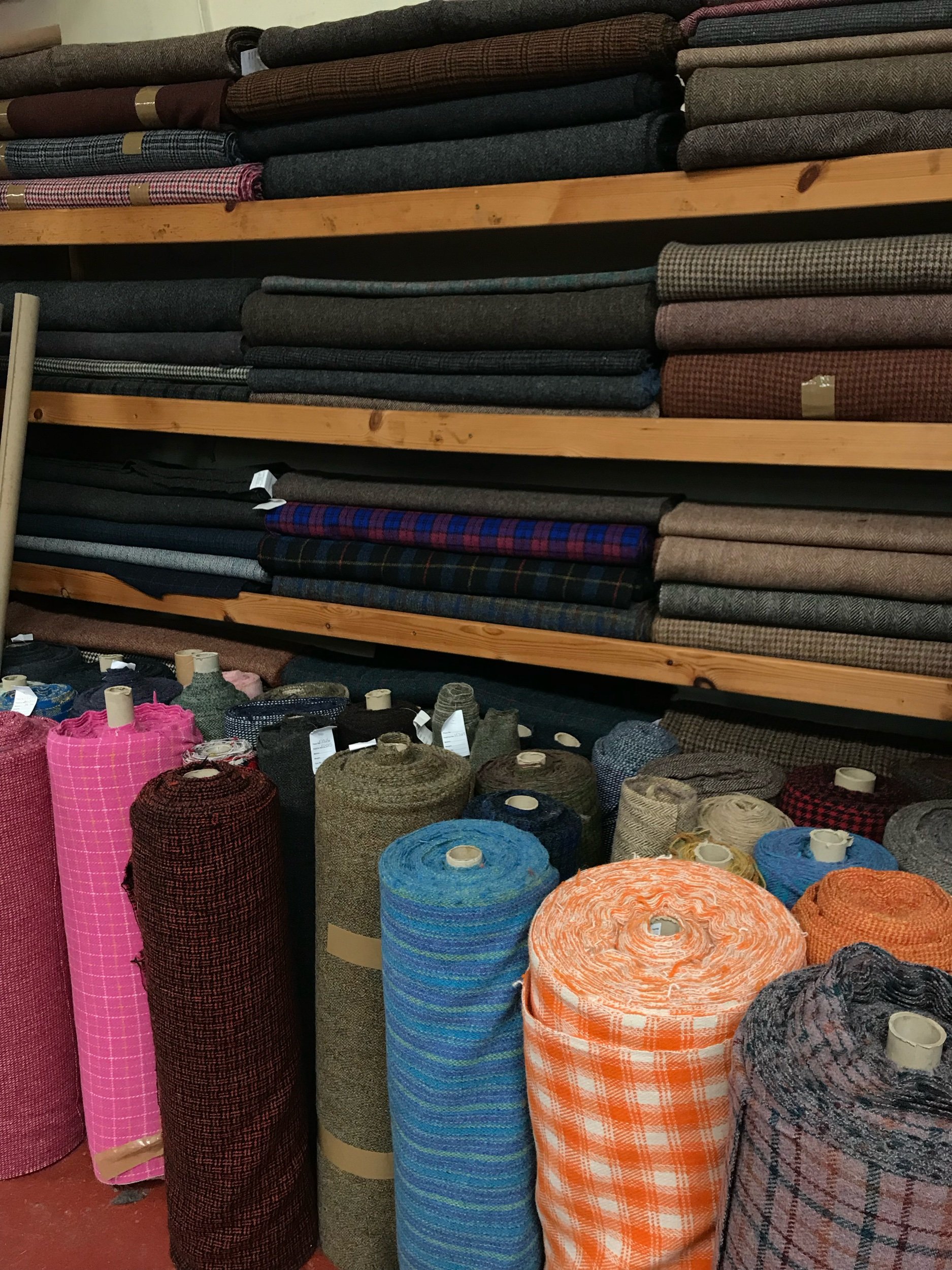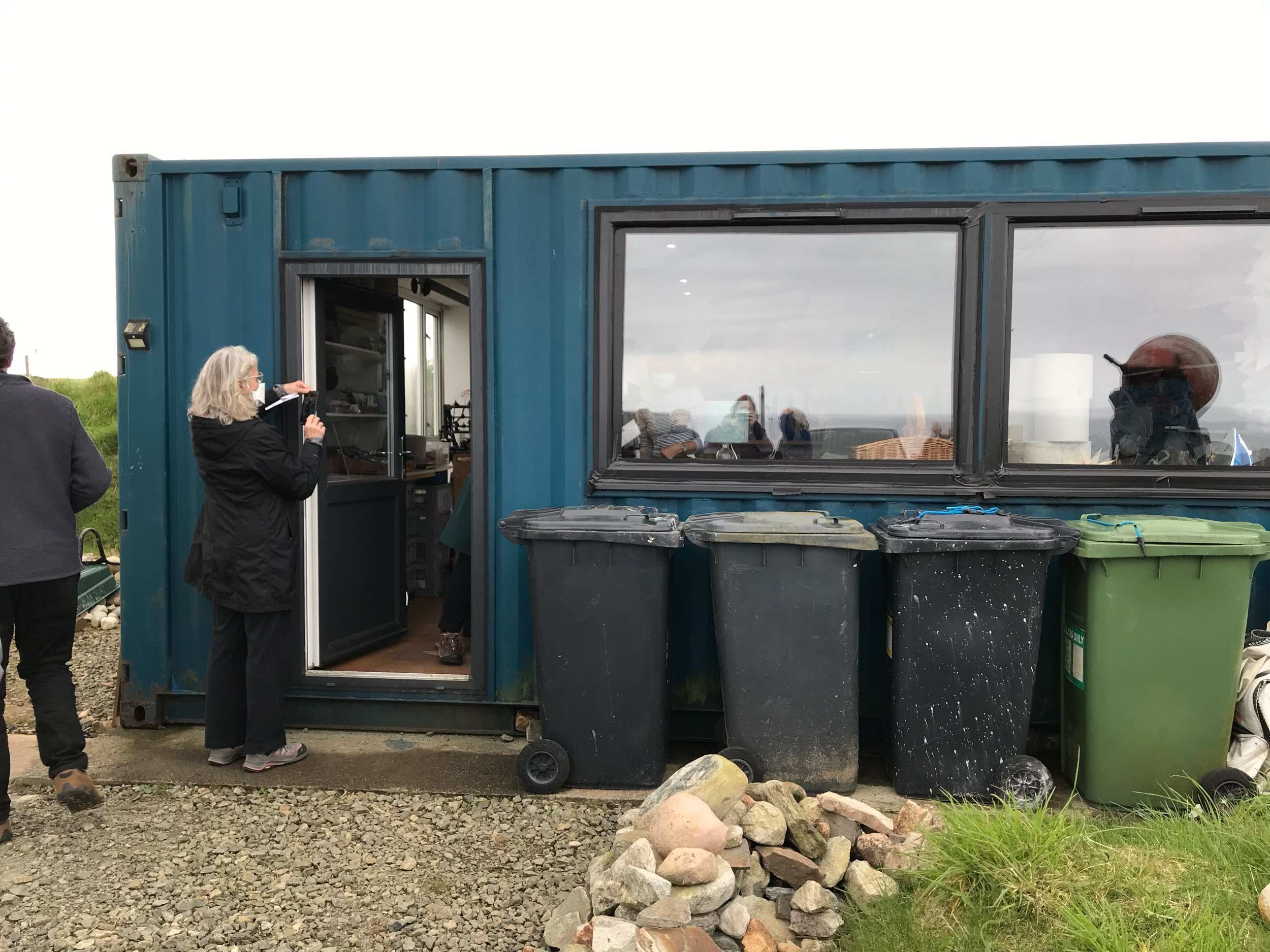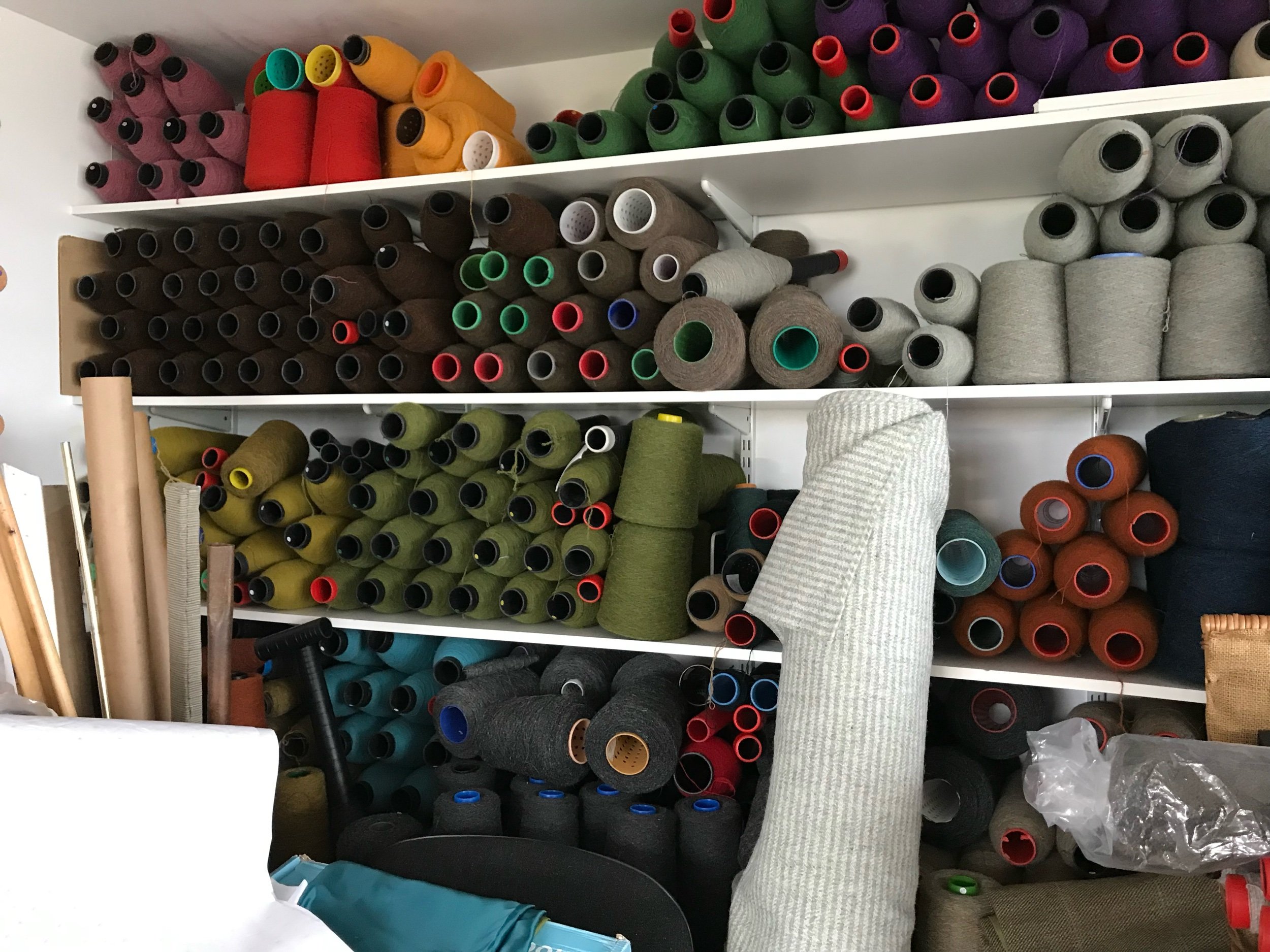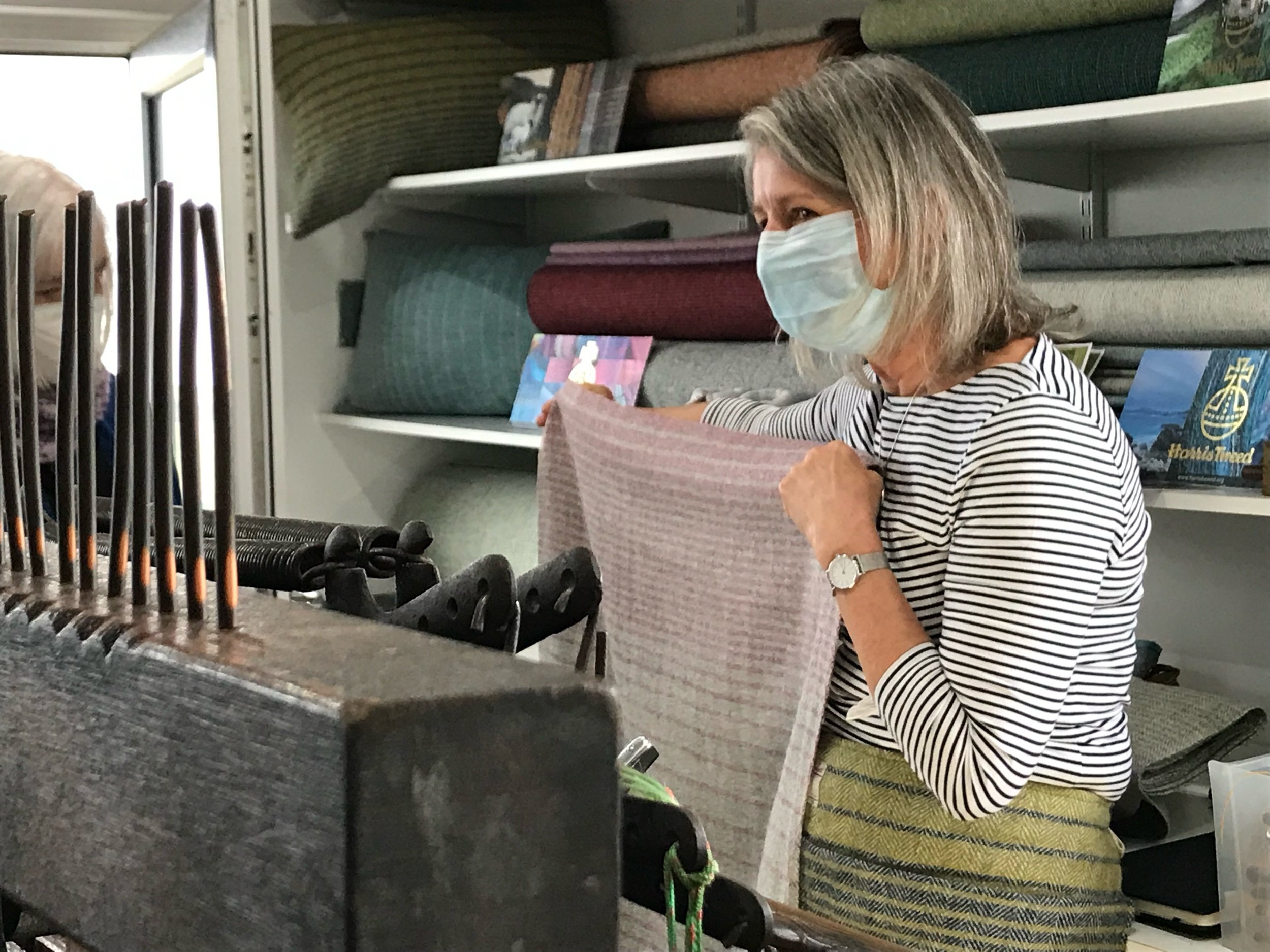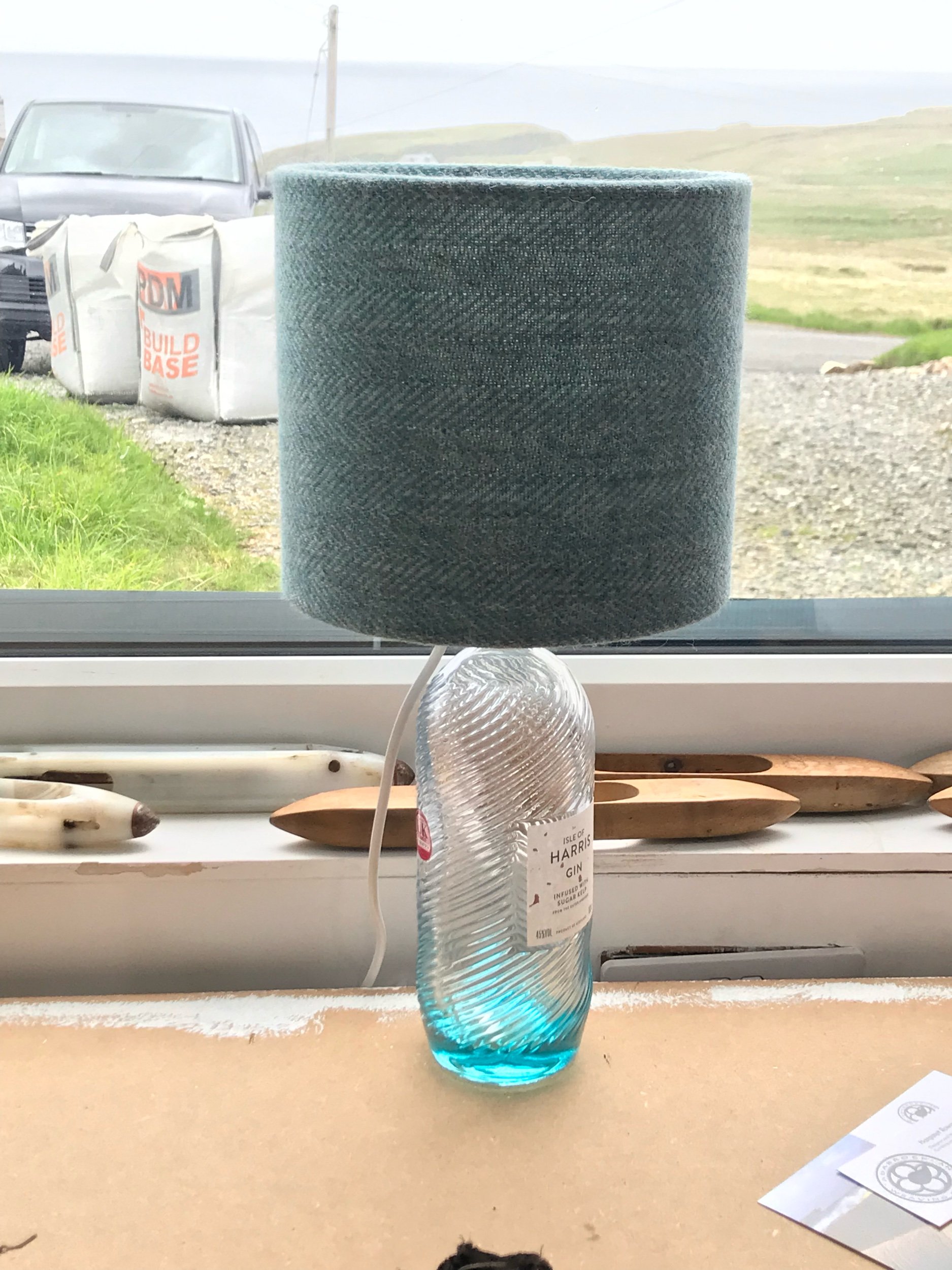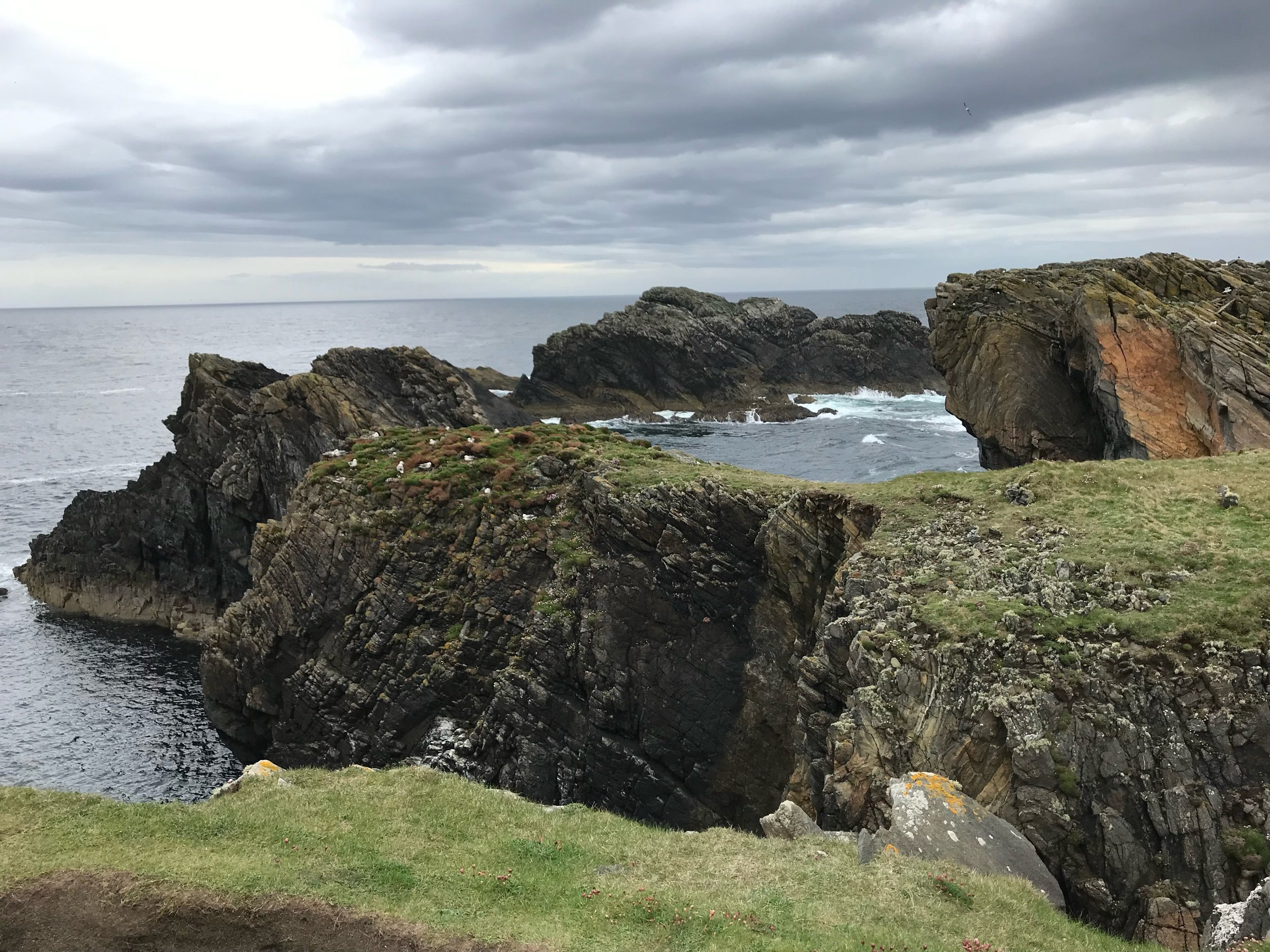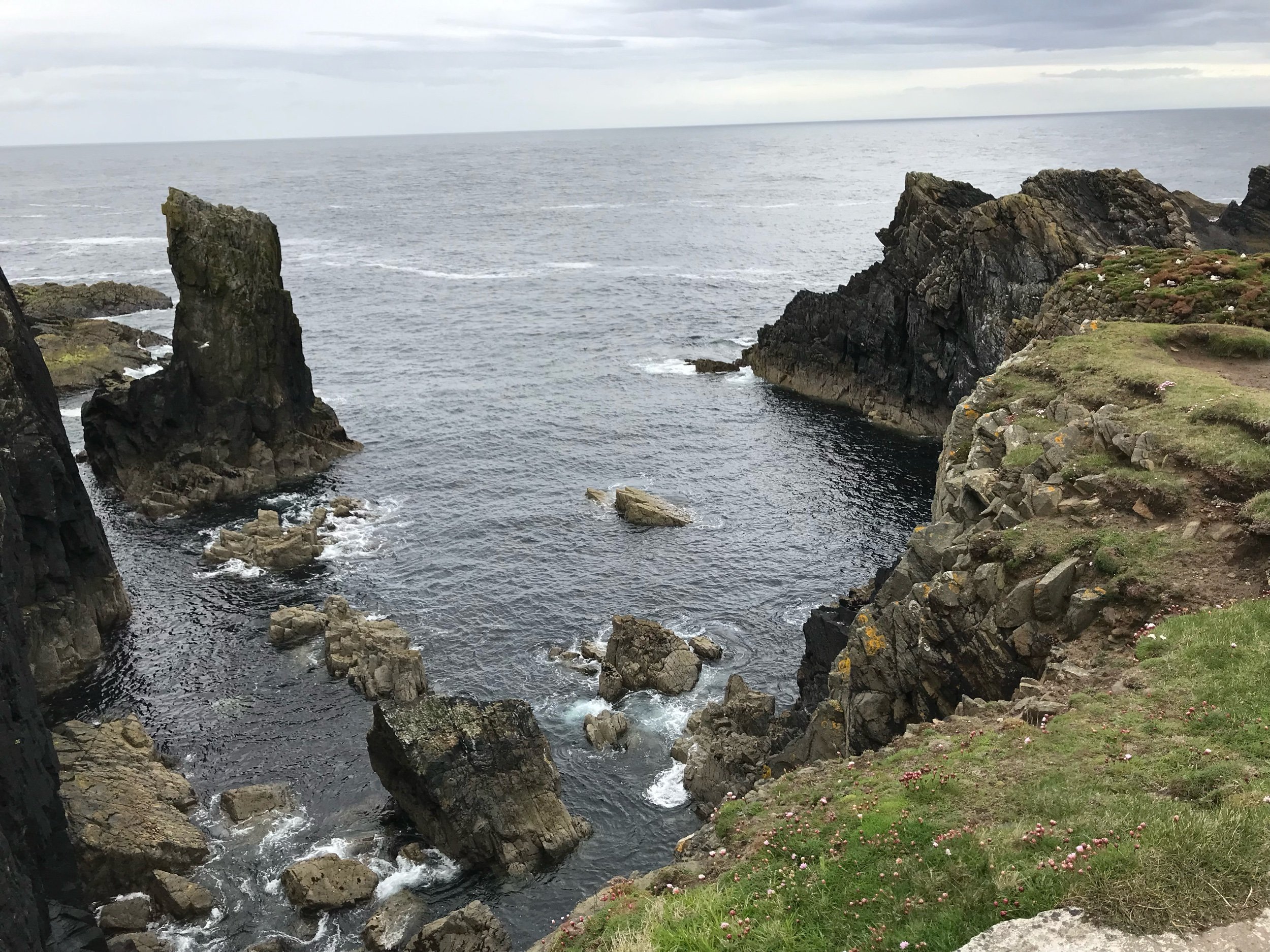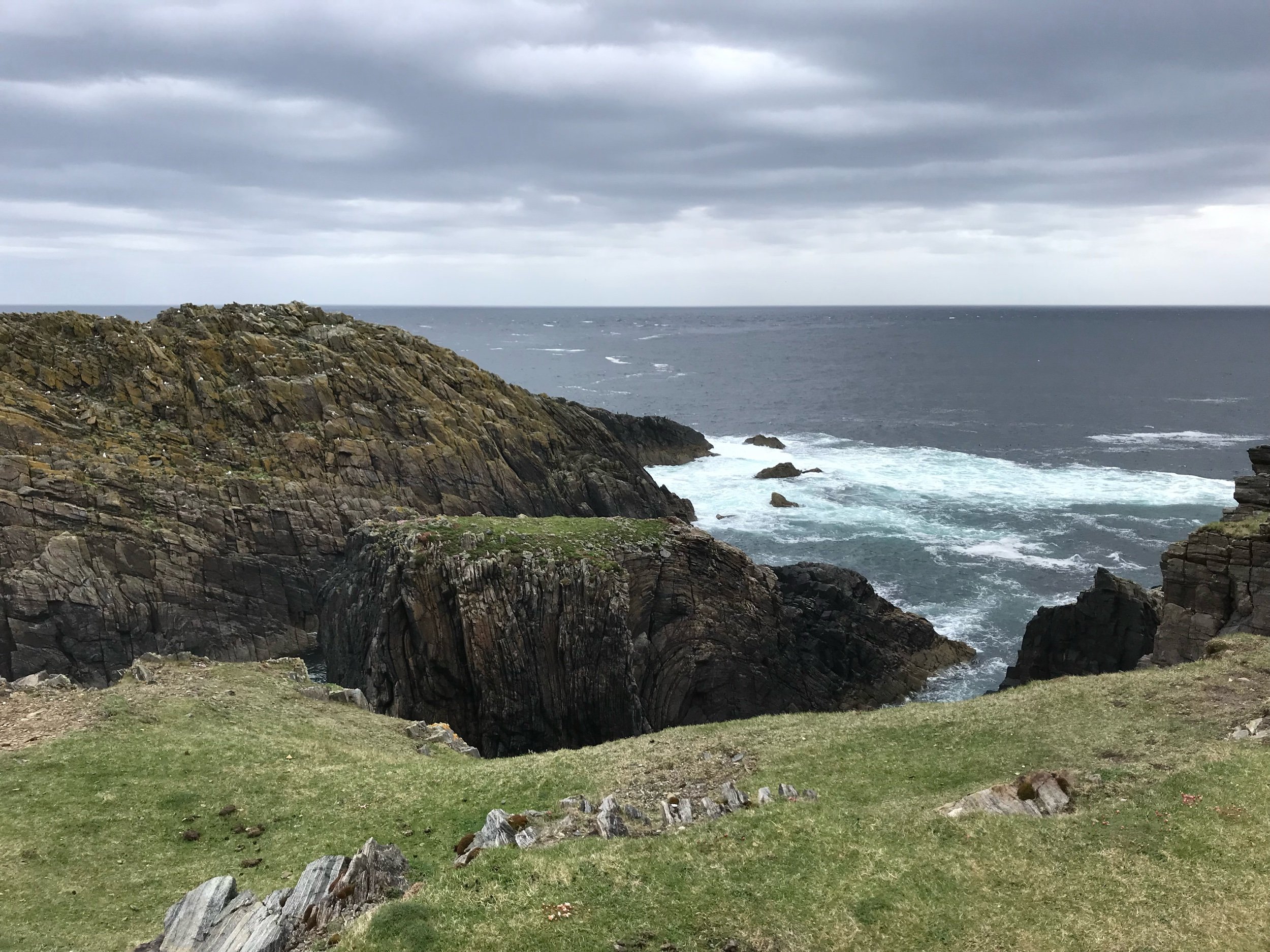Standing stones
Day 10. Tuesday, May 17, 2022: We have the incredible privilege of meeting with the CEO of the Harris Tweed Authority, Lorna Macaulay, at the HTA headquarters in Stornoway. We are all tickled with the furnishings in the conference room - check out the chairs and table! Lorna gives a great presentation on the history of Harris Tweed®, the legal protections it has, but also the challenges with counterfeit and improper use, and it is a great opportunity for us to dig into economic/industry questions we have. After that, a mill weaver demonstrates on both a Hattersley single width and a Griffith double width loom for us in the HTA brand room.
We head to the Callanish Stones, a 5000 year old standing stone arrangement. Each stone has its own beauty, and the arrangement of them must have had some intense meaning to the original architects.
We move on to a restored blackhouse village. These old dwellings have stone walls and thatched roofs. The stones on the roof help to anchor the thatch and prevent it from sliding down, and they give the houses a very distinctive look. Some blackhouses remained inhabited until the 1970s. They were heated with peat fires, and as we drive today along the less rocky side of the island we see evidence of recent peat cutting.
Just up the hill from the blackhouse village is the Carloway tweed mill, the smallest of the three Harris Tweed® mills. Our textile expert Kitty gets the okay from the mill for us to swing by for an impromptu visit. We meet with the mill director and learn about the operation. He graciously lets us poke around in all the nooks and crannies to see what there was to see. We see piles of greige cloth waiting for processing, and dyed wool waiting to get carded and spun together into a beautiful yarn. The mill has some finished fabric available for purchase in a small mill shop.
The CEN museum is a small but wonderful museum of island life. We see peat shovels and harvested peat. A Hattersley loom and pirn winder is on display, and an older woman leaving the busy archive room stops to tell us she spent 5 hours each day winding pirns for her dad. An installation of old analog instrumentation banks represents the Decca navigation system, including a small booklet written from the first hand perspective of a man who spent 30 years operating and maintaining the system in Scotland. Fascinating!
Then we visit Margaret Rowan at Adabrock Weaving Company in the small village of Adabroc. The village air is perfumed with the scent of peat fires, as these modern houses use peat furnaces for heat. Margaret’s weaving shed is two shipping containers set together, and she’s got a lovely view of the ocean from the big windows in front. She is not a native islander, but she has embraced the lifestyle and it’s obvious just how much she loves it there. Her tweeds are more contemporary and daring, with asymmetric stripes. Look for the lamp made from a Harris Tweed® shade and a Harris gin bottle. Everyone on the island seems to have a stash of empties!
Our final stop of the day is the Butt of Lewis, the most northerly tip of the island. It is simply breathtaking. Our time traveling around the entirety of the Isle of Harris and Lewis truly helps us understand how “from the land comes the cloth.”
